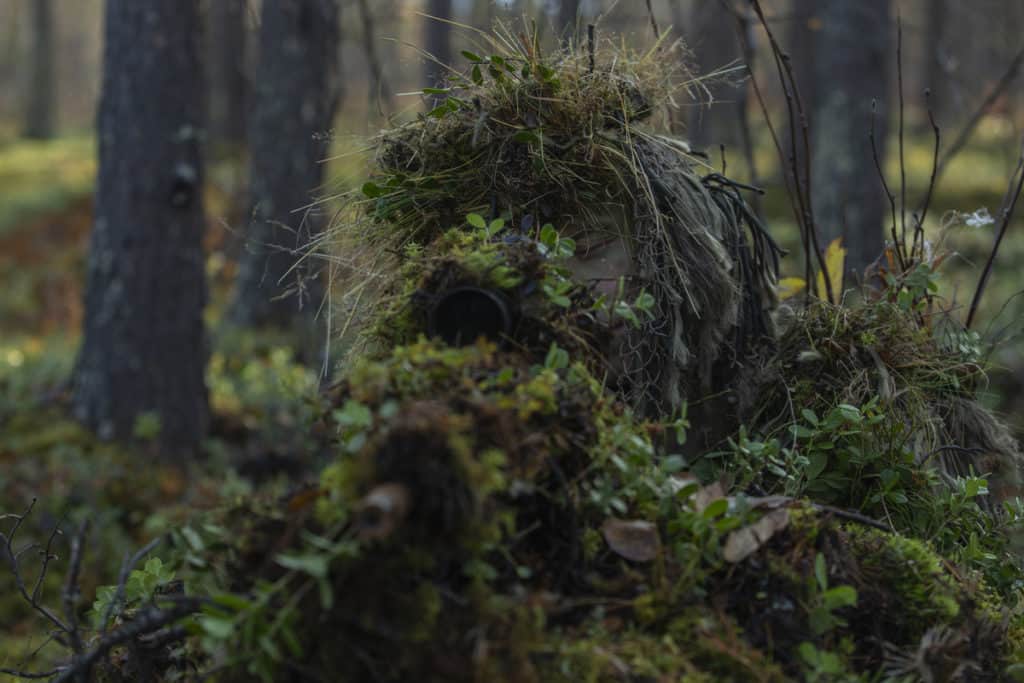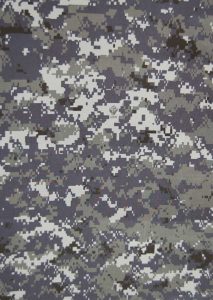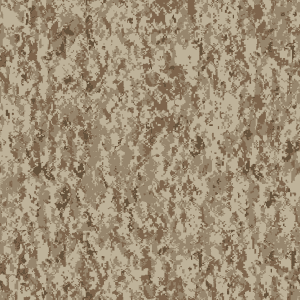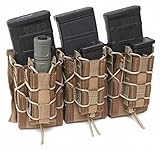Camouflage is a French word meaning disguise.
Historically, camouflage has been used by both military forces and hunters, for pretty much the same purpose.
And that purpose is to remain hidden – to be able to take action first from a position of surprise.
OK – that makes sense.
Here in this article we’ll focus on common camouflage in use today, primarily for uniforms and personnel concealment.

What is Camouflage?
From the US Army FM 5-20 Manual “CAMOUFLAGE BASIC PRINCIPLES AND FIELD CAMOUFLAGE”:
“Camouflage uses concealment and deception to promote our offensive or defensive action, to surprise, to mislead the enemy, and to prevent the enemy from inflicting damage”
and
“Concealment includes hiding from view, making hard to see clearly, arranging obstructions to vision, deceiving, and disguising.”
“Deception is attained by the use of, any means or measure to mislead, distract, or misrepresent any installation, equipment, or activity.”
So, we see there are two essential elements: Concealment and Deception.
Camouflage and Concealment
In this article, we’re going to focus mostly on concealment.
How can we conceal an individual and their gear?
First, we have to understand the 8 factors of recognition.
The factors of recognition are the telltale elements that will allow an observer to see and recognize a person or object.
The 8 factors of recognition are position, shape, shadow, texture,
color, tone, movement, and shine.
Position
Position is the relation of an object or person to its background.
How does this apply to concealment?
A light colored object in front of a dark background is easy to see.
A person silhouetted against the skyline can be seen easily, from very long instances.
And so forth. We must evaluate – where is the person or item located that we want to camouflage, and what is the background?
Shape
Shape is the outward or visible form or outline of an object or person as distinguished from its surface characteristics and color.
Much of the essence of camouflage is concealing shape – or obliterating shape.
If you want to hide a truck, camouflage it such that the outline doesn’t look like that of a truck.
This is a lot of the principle behind the ghillie suit popular with military snipers.
Shadow
Shadow can assist or betray camouflage.
One must consider the shadow they are casting – and does it render them more recognizable in terms of position or shape?
Secondly – it’s easier to conceal an item in the shade rather than direct sunlight.
Texture
Texture affects the tone and apparent coloration of things because of its absorption and scattering of light.
Highly textured objects tend to be easier to camouflage.
Most importantly because textured objects tend to remain constant in tone, even when the observer is changing angles or light levels.
Types of Camouflage
Let’s cover some of the common (and uncommon) camouflage patterns in modern use.
Multicam
We’ve got a whole article about the various types of MultiCam pattern from Crye Precision.
This color is popular on Plate Carriers, and other tactical gear.
Navy AOR-1 and AOR-2
The NWU (Navy Working Uniform) uses some new patterns.
The NWU Type I uniform uses this pattern. It is meant to resemble the colors typically found on ships.

AOR-1 is a pixellated pattern for use in dry, arid regions.

AOR-2 is a lush woodland pattern.

These patterns are proprietary to the US Navy and cannot be found on commercial products.
Historical Camouflage – Tiger Stripe
Tiger stripe camouflage was created for use in the Vietnam war.
The pattern is particularly effective for jungle usage.
It is still occasionally seen in use today.

(U.S. Army photo by Staff Sgt. Iman Broady-Chin)
References
US Army Field Manual FM5-20: CAMOUFLAGE BASIC PRINCIPLES AND FIELD CAMOUFLAGE
List of military clothing camouflage patterns (Wikipedia)
U.S. Army Camouflage Improvement Explained
https://camouflagegeek.wordpress.com/
The appearance of U.S. Department of Defense (DoD) visual information does not imply or constitute DoD endorsement.


